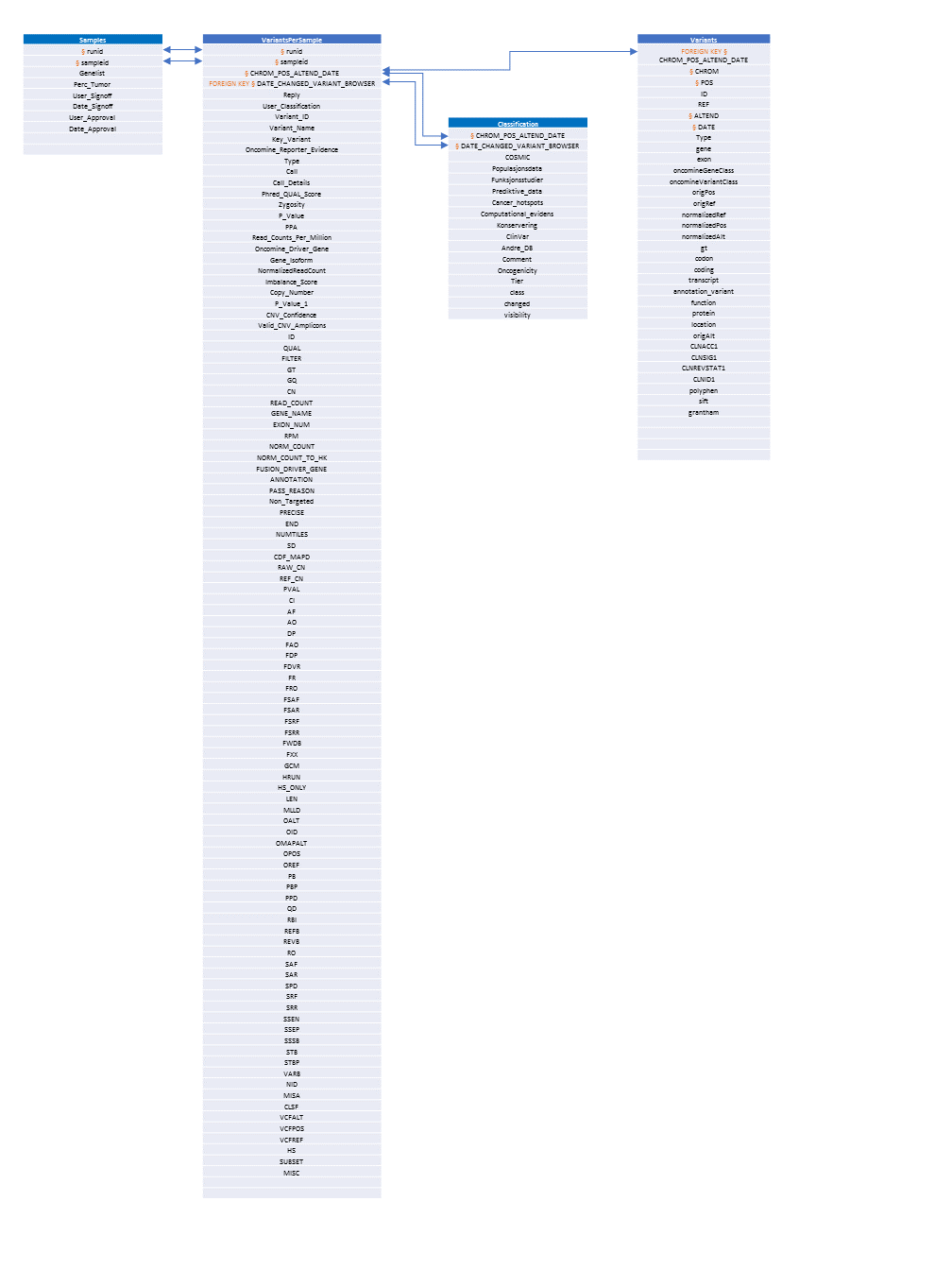fullFres
Database med import/eksportmuligheter og GUI for tolkning av sekvensvarianter fra tumorsekvensering
Oppsett:
- Sqlite-db via Sqlalchemy
- Python3
- Flask for backend-server
- Vue som frontend
- Bootstrap som css
Info
- Genexus VCF inneholder noen linjer med semikolon i protein feks sånn: p.[Gln61His;Glu62Lys]. Det skaper krøll i parsing. Ha noe konvertering i script som kopierer vcf fra server?
Aktivere virtualenv:
virtualenv is used to manage Python packages for different projects. Using virtualenv allows you to avoid installing Python packages globally which could break system tools or other projects. You can install virtualenv using pip.
# Installert med: python3.9 -m venv env
# Aktiver
source env/bin/activate
# Deaktiver
deactivate
# Installer biblioteker
python3 -m pip install -r requirements.txt
# Installere utenom requirements.txt:
python -m pip install <pakkenavn>Starte for test:
Kjør flask app (backend API):
# Starte flask
# Fra /illumina/analysis/dev/2022/fullFres
python run_backend_server.py # Sier i fra om du må aktivere virtualenv
# Starte javascript
cd frontend; sh start_frontend.sh
# Passord
#bruker: passord: buso123TODO:
- [x] Bestemme tabell-bibliotek
- [x] Lage db schema
- [x] Lage funksjon for å generere DB
- [x] Lage dockerfiles
- [ ] Lage rapport-funksjon
- [ ] Lage test-mappe og scripts for å teste
Info om diverse installeringer etc
# Installer node:
curl -o- https://raw.githubusercontent.com/nvm-sh/nvm/v0.35.3/install.sh | bash
source ~/.bash_profile
nvm install v16.14.2
# Create Vue App:
# vue create frontend # preset = vue2
# Pakker som er installert etterpå (i frontend-folder):
npm install bootstrap bootstrap-vue vue-router@3.4.9 axios vue-axios --save
npm install --save vue-perfect-scrollbar
# Starts the development server.
npm run serve
# Jeg måtte nedgradere nodeversion for å få det tilPakker som sikkert dockerimage må ha for at dette skal funke:
- libffi_devel
Installerte python slik:
wget https://www.python.org/ftp/python/3.9.11/Python-3.9.11.tgz
tar xvf Python-3.9.11.tgz
cd Python-3.9*/
./configure --enable-optimizations
sudo make altinstallDB schema

Info om Vue auth
Jeg lager en relativt enkel login-løsning uten Oauth, og satser heller på en lokal mock backend ala: https://jasonwatmore.com/post/2018/07/14/vue-vuex-user-registration-and-login-tutorial-example
Bruk av Variant Browser
- Hvis flere prøver blir lastet opp samtidig og to eller flere av de har den samme varianten. Da vil alle få lagret data fra databasen for Classification. Hvis en av de så blir oppdatert med nye data til Classification, da vil ikke de andre prøvene som ble lastet inn samtidig få disse nye dataene.